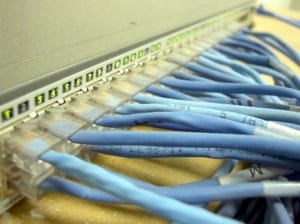How to Ensure Email Delivery of Important Notices
 Sending an email can be a pretty blind act. When you click “Send” your email disappears into the ether and, unless it has a hard “bounce” there’s no indication of what happened to it. With fax and postal mail, there are at least some ways to effectively confirm that it was at least received.
Sending an email can be a pretty blind act. When you click “Send” your email disappears into the ether and, unless it has a hard “bounce” there’s no indication of what happened to it. With fax and postal mail, there are at least some ways to effectively confirm that it was at least received.
Email, however, has a very perilous journey around spam filters and less-than-reliable connections and, even if everything goes perfectly, we may never hear back about it. Though you can sometimes ask for delivery confirmation or return receipts, those don’t work consistently and most email services have abandoned them for a variety of reasons.
So when you send an email with an important notice, whether it’s a cease and desist letter, a DMCA notice or something else altogether, how do you confirm that it got there? There’s no easy way to do that, but you can certainly improve your odds and make sure that your messages at least make it through most of the time.
With that in mind, here are a few tips I’ve learned to improve your email’s chances of getting through during a critical time.
1. Use a Good Email Provider
Where you send your email from matters a great deal. You’re best off using a major email provider such as Google, Yahoo! or Hotmail and not your hosting company. These systems have a better reputation than your server will be able to build up and are widely trusted.
It’s best to have accounts on these services, even if you don’t use them as your primary email address, just to ensure that mail is able to pass back and forth without trouble.
2. Choose the Right Address
When sending mail, where you send it to also matters. The older an email account is, the more likely it is to be inactive. Email may not bounce, but it won’t be read either.
When trying to find an email to contact a person, company or a site, favor the newest email address possible. If you see an account is more than a few years old, sending to it blindly is not a good idea. If you have to send to an older address, also CC to a newer one or an account that you know will be active, such as the general info account if the company has one.
It may be annoying for them to have to forward the message along, but it may be necessary in some cases.
3. Ditch Attachments
I’ve done some pretty interesting side-by-side response studies and found that you improve response rate by a good deal if you just stop using attachments. Though it might feel nice to have an attractive letter on PDF with your email, save it for fax.
Many email filters automatically discard messages with attachments from untrusted email addresses. If the host asks for a signed PDF, you can provide it then, however, don’t waste your time sending one before then as it reduces the chances of your email making it.
4. Avoid Using Too Many Links
Sending links may be unavoidable when sending out DMCA notices, but try to avoid adding in any unneeded ones. Trim out the ones in your signature and generally try to reduce the links you send in a single email. Emails with too many links are frequently thought to be spam and are likely to get filtered out.
5. Use DKIM
If your email provider is separate from your hosting provider (See: Item 1), such as with Google Apps, you will probably want to use DKIM to prove that the email is not a forgery. If your email provider offers it, setup is usually fairly fast and only involves getting a key from your email provider and editing your site’s DNS to include it.
Google recently launched this feature for Google Apps and that has greatly reduced the amount of my mail filtered as spam. If you are a Google Apps user, you can learn how to use DKIM here.
6. Use Forms When Possible
For those who need to send a lot of email, forms can be a major headache but when sites and companies offer forms, they are pretty much a guaranteed way to bypass any spam filters.
Though, for many reason, you should likely send another copy of the email via a more traditional method, sending a notice via a form is a good backup method to ensure that it makes it there in one piece.
Bottom Line
In the end, will any of these things guarantee that your email makes it there? No. There’s a good reason we still have process servers, certified mail and faxes still being used for most critical legal communication. They are much more reliable ways to confirm that a message got to its recipient, much more so than email.
That being said, many times email is the most efficient way to send a message and, in those situations you will want to maximize your chances of the message getting through.
The methods above are a good starting point, all based upon my experience and good email common sense, but they are still no promise.
Considering all the links that must come together for an email to go form A to B and be read, it’s amazing that as many messages get through as they do.
Want to Reuse or Republish this Content?
If you want to feature this article in your site, classroom or elsewhere, just let us know! We usually grant permission within 24 hours.
